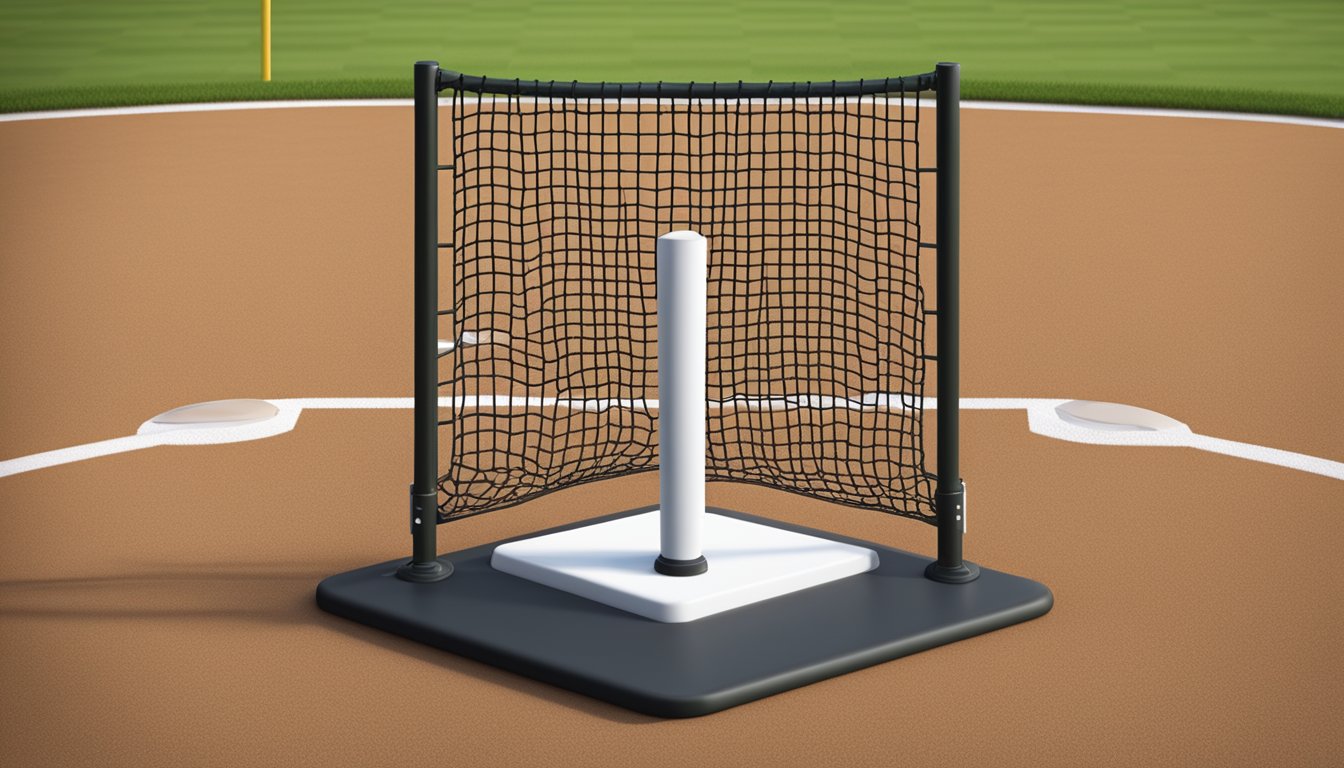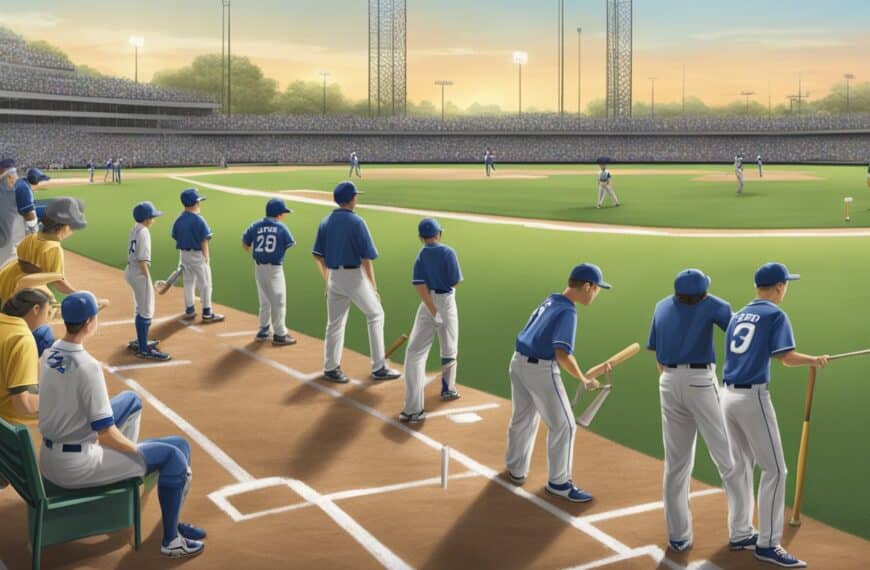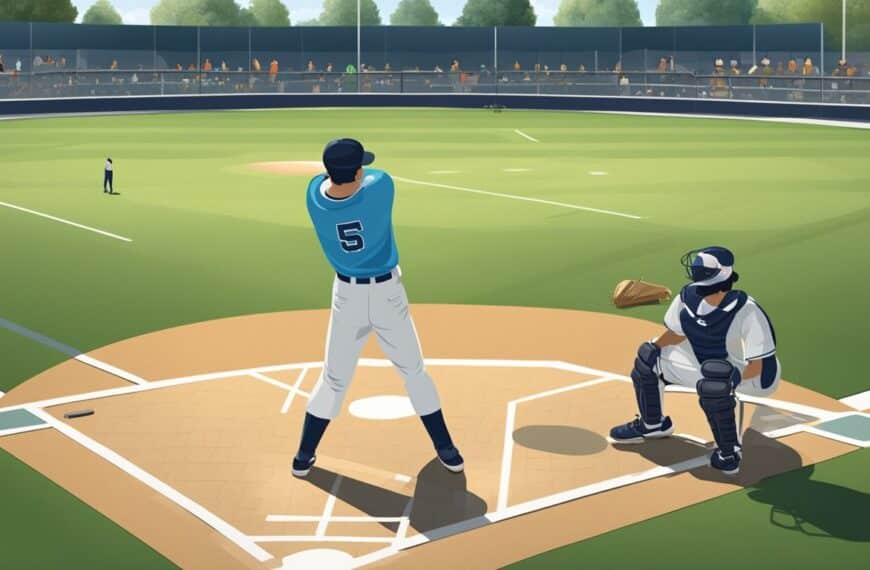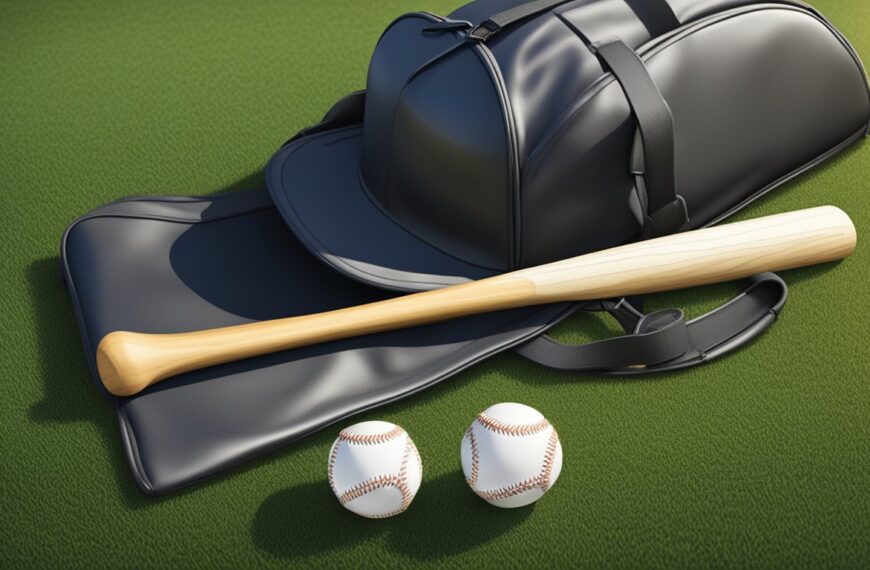Hand-eye coordination is an essential aspect of many sports, particularly those involving hitting objects, catching, or rapidly responding to visual cues. In baseball, for instance, the ability to synchronize visual input with hand movement is crucial for successful batting. Batting tees, a staple in baseball and softball training regimes, provide an effective way for players of all levels to develop and refine their hand-eye coordination. These simple training tools allow for a controlled environment where athletes can focus on the mechanics and timing of their swings without the unpredictability of pitched balls.
Using batting tees goes beyond simply improving the mechanics of a swing. It establishes a solid foundation for hand-eye coordination that athletes can build upon with subsequent skills and drills. When incorporated into regular training sessions, batting tee exercises enable players to isolate specific aspects of their techniques and adjust their posture, swing path, and contact consistency. Additionally, they form the basis for more advanced coordination training, such as integrating visual and cognitive challenges or moving onto live pitching practice.
Key Takeaways
- Batting tees are pivotal in enhancing hand-eye coordination for baseball and softball players.
- Structured batting tee drills lay the groundwork for advanced coordination development.
- Regular practice with batting tees contributes to better swing mechanics and overall athletic performance.
Understanding Hand-Eye Coordination
https://www.youtube.com/watch?v=fCrKhr0vkKo&embed=true
Effective batting relies significantly on hand-eye coordination, which encompasses the brain’s interpretation of visual input to guide hand movements accurately.
The Science of Coordination
Hand-eye coordination is the ability of the body’s visual system to process visual stimuli and direct motor control. In the context of batting, coordination is crucial as it allows the batter to align the bat with the incoming pitch. This process involves a complex network of neural pathways that coordinate the visual information with hand movements.
Cognition and Perception
Cognition plays a pivotal role in hand-eye coordination, specifically in how individuals perceive the speed and trajectory of a moving object like a baseball. The brain must quickly interpret these perceptions for the hands to react and execute the movement. Focus and cognitive sharpness are essential for this rapid processing.
Aging and Coordination
As people age, hand-eye coordination can naturally decline. This decline in coordination is often due to changes in brain health and cognition. However, with regular practice and physical activity, individuals can maintain and even improve their coordination skills. Activities involving batting tees are especially beneficial as they provide repetitive practice that can help sustain eye-hand coordination in older adults.
The Role of Batting Tees in Developing Coordination
https://www.youtube.com/watch?v=Z2B-mKr7j4w&embed=true
Batting tees play a pivotal role in enhancing a player’s hand-eye coordination, crucial for consistent performance at the plate. The targeted practice offered by tees contributes to the refinement of hitting mechanics, leading to improved precision and batting average.
Benefits of Using Batting Tees
A batting tee is instrumental in a player’s development, offering numerous benefits that enhance coordination:
- Consistent Repetition: Batting tee drills allow players to practice swings repeatedly, which can lead to an improvement in coordination. The repetitive nature of the exercise reinforces muscle memory, which is vital for maintaining a consistent batting average.
- Adjustability and Flexibility: Tees can be adjusted to various heights and locations, enabling players to work on hitting pitches in different zones. This adjustability helps in developing the accuracy and precision required to connect with a wide range of pitch locations.
- Immediate Feedback: When using a batting tee, players receive immediate feedback on the angle and quality of their contact. This direct feedback is essential for adjusting technique and improving hand-eye coordination.
- Boosts Confidence: As players hone their skills and see measurable improvements, they often experience a boost in confidence at the plate. The confidence gained through diligent practice can translate into better in-game performance.
Selecting the Right Batting Tee
Choosing an appropriate batting tee is crucial for maximizing the benefits of the practice. Here’s what to consider:
- Durability: A well-constructed tee can withstand significant use and can provide a stable hitting platform.
- Portability: Players may seek a batting tee that is easy to transport, allowing for practice in various locations.
- Adjustability: To simulate various pitch locations, a tee should offer a wide range of height adjustments.
- Base Design: A stable and broad base ensures the tee does not tip over easily during drills.
Players must select a tee that complements their individual practice needs and helps them focus on their coordination development goals. Using the right batting tee, athletes can systemically work towards refining their hitting technique, boosting their overall batting performance.
Fundamental Batting Tee Drills
https://www.youtube.com/watch?v=XwHLwDVRjjU&embed=true
Developing hand-eye coordination in batting involves a combination of basic drills for newcomers and more advanced techniques for experienced players. A clear focus on precision and accuracy enhances reaction speed and overall batting skill.
Basic Drills for Beginners
For individuals starting out, foundational batting tee drills are essential for building confidence and technique. These drills emphasize repetition and focus on developing a consistent swing.
-
Static Tee Drill:
- Objective: Master hitting the ball from a stationary position.
- Method: Place the ball on the tee at waist height. Adopt your batting stance, concentrate on the ball, and execute a level swing through the ball’s center.
-
Directional Hitting Drill:
- Objective: Improve precision in hitting to different field positions.
- Method: Set up multiple tees at varying angles and practice hitting toward predetermined areas, such as “opposite field,” “center,” and “pull side.”
Advanced Techniques for Experienced Players
Experienced hitters refine their skills through complex drills that challenge their hand-eye coordination and reaction speed.
-
Variable Height Drill:
- Objective: Develop an adaptive swing for different pitch heights.
- Method: Adjust the tee to various heights, compelling the hitter to react and adapt their swing mechanics accordingly.
-
Soft Toss Integration Drill:
- Objective: Enhance the ability to transition from tee work to live pitching.
- Method: Integrate soft toss exercises with batting tee drills. Perform several swings on the tee before switching to soft toss, alternating between static and dynamic hitting.
Complementary Exercises for Hand-Eye Coordination
https://www.youtube.com/watch?v=WmnEWRghfhw&embed=true
Enhancing hand-eye coordination for batting practice can be achieved through various exercises. These activities are designed to improve precision, reaction time, and fine motor skills vital for hitting a moving target.
Catch and Throw Exercises
Playing catch serves as a foundational exercise to bolster hand-eye coordination. Essential to baseball players, it involves two or more participants throwing a ball back and forth, aiming to catch it efficiently.
- Equipment: Baseball glove, baseball
- Activity: Two people, standing approximately 20 feet apart, throw a baseball to each other, increasing distance as proficiency grows.
- Objective: To improve throwing accuracy and catching reflex.
Juggling and Dexterity Games
Juggling exercises encourage enhanced dexterity and hand-eye synchronization. Initially, one can start with juggling tennis balls to develop the skill set.
- Steps to Juggle:
- Begin with one tennis ball, tossing it from one hand to the other.
- Introduce a second ball, throwing each ball in an arc to the opposite hand.
- Add a third ball following the same pattern.
Dexterity games, such as ping-pong, also contribute to these skills, where rapid reactions are crucial.
Tai Chi and Precision Sports
Tai Chi, an ancient martial art, promotes fluid movements and stability, enhancing control and coordination. This practice can indirectly benefit batting by developing focused and precise movements.
- Routine: Simple Tai Chi movements, practiced for 15-20 minutes, can greatly increase coordination and balance.
Precision sports like darts and pickleball also contribute to hand-eye coordination. These sports demand precision, strategy, and fine motor control, making them excellent complements to batting tee practice.
- Pickleball: A sport combining elements of tennis, badminton, and ping-pong, focusing on precision and soft hand skills.
- Darts: A game of controlled movements and accuracy, aiming small darts at targeted areas on a board.
Incorporating Visual and Cognitive Training
https://www.youtube.com/watch?v=JBTJLAh9h8Y&embed=true
Developing hand-eye coordination in sports, especially in batting, involves the critical enhancement of both visual and cognitive abilities. Mastery in these areas allows a player to respond swiftly and accurately to stimuli during play.
Improving Depth Perception and Focus
Depth Perception: Players should train to improve how they gauge the distance of an approaching ball. Drills that require batters to estimate and then verify the distance can sharpen this skill.
- Drills:
- Bucket Ball: Place buckets at varying distances and have players toss a ball into them.
- Tennis Ball Drop: Drop a tennis ball from a height and have the batter call out when to swing to meet the ball at a specified point.
Focus: Maintaining focus while filtering out distractions enhances a player’s ability to concentrate on incoming stimuli—like the ball.
- Techniques:
- Stare Down: Have players focus on a specific point on the batting tee before hitting.
- Noise Distraction: Practice batting with background noises to train concentration.
Enhancing Peripheral Vision and Awareness
Peripheral Vision: Training peripheral vision allows batters to better detect motion outside their direct line of sight.
- Exercises:
- Ball Toss: With eyes fixed ahead, catch balls thrown from the sides.
- Flashing Light: Hit while responding to random flashing lights in the peripheral field.
Peripheral Awareness: Players need to be cognizant of the entire field, which can be honed through specific drills.
- Awareness Drills:
- Color Calls: While batting, identify the color of randomly held up signs in the periphery.
- Directional Hitting: Practice hitting the ball in different directed areas, working to see the whole field.
In each of these drills, visual reaction time is crucial as it dictates how quickly a player can process and respond to visual stimuli. Peripheral awareness and focus contribute to minimizing the impact of potential distractions, thereby refining a batter’s overall performance.
Specific Sports Drills for Coordination
https://www.youtube.com/watch?v=Rg2788fPhZw&embed=true
To enhance hand-eye coordination in sports, implementing specific drills tailored to baseball and softball can lead to substantive improvements. These drills not only refine batting skills but also fielding prowess and overall athletic coordination.
Baseball and Softball Drills
- Tennis Ball Toss: Players improve their catching skills by tossing a tennis ball against a wall and catching it with their glove hand. This drill enhances reaction time and precision.
- Small Baseballs: Using small baseballs or training balls during batting practice sharpens a player’s focus and eye-tracking ability. Hitting these balls accurately requires refined hand-eye coordination.
-
Barehand Fielding:
- Objective: Build softer hands and faster hand-eye coordination.
- Drill: Roll or bounce tennis balls toward the player, requiring them to field with bare hands.
-
Soft Toss with a Twist:
- Objective: Develop quick bat speed and improve visual tracking.
- Drill: Coach or partner tosses small baseballs from the side, as batters hit the incoming baseballs, emphasizing timing and accuracy.
Example Practice Session:
| Time | Drill | Focus | Equipment Needed |
|---|---|---|---|
| 10min | Tennis Ball Toss | Catching and focus | Tennis ball, glove |
| 15min | Small Baseballs Batting Practice | Batting accuracy | Training baseballs |
| 10min | Barehand Fielding | Fielding coordination | Tennis balls |
| 15min | Soft Toss with a Twist | Reaction time and tracking | Small baseballs, bat |
Cross-Training with Other Sports
- Swimming: Swimming is an effective cross-training activity that enhances overall coordination and body awareness.
- Video Games: Certain video games improve hand-eye coordination and strategic thinking, offering an alternative training method outside the field.
Swimming complements field sports like baseball and softball by engaging different muscle groups and developing rhythm and timing. Great for active recovery and coordination, it’s useful for cross-training athletes.
Video games, surprisingly, can benefit athletes as well. They can be designed to enhance reaction times and strategic assessments. This makes for a unique and enjoyable way to improve a player’s cognitive aspects of hand-eye coordination.
Psychological Aspects of Coordination Training
Improving hand-eye coordination through batting tees also involves psychological elements such as building confidence and managing distractions. These factors significantly affect an athlete’s performance and training efficacy.
Building Confidence Through Mastery
When an individual repeatedly practices with a batting tee, they not only hone their physical skills but also experience a growth in confidence. As they observe their progress and strike the ball with increasing competency, their self-assurance in their abilities strengthens. Confidence, once consolidated, becomes a self-reinforcing cycle; assured athletes are more likely to approach each swing with a positive mindset, which can positively affect their hand-eye coordination.
- Key to Confidence:
- Consistent practice.
- Visible improvement.
- Positive self-talk and reinforcement.
Overcoming Distractions and Stimuli
An athlete’s ability to stay focused in the presence of various distractions and stimuli is crucial to their coordination training. Distractions can range from auditory noise to visual movements that are not part of the task at hand. Training in controlled environments with batting tees allows athletes to gradually adapt to these stimuli, effectively reducing their impact over time. This adaptation process is essential for enhancing hand-eye coordination, especially in high-pressure or competitive scenarios.
- Strategies to Manage Distractions:
- Developing a routine.
- Incorporating meditation or mindfulness practices.
- Gradual exposure to varying levels of stimuli during training.
Lifestyle and Leisure Activities
https://www.youtube.com/watch?v=pzvT71bYw8A&embed=true
Developing hand-eye coordination can be significantly enhanced through engaging in various lifestyle and leisure activities, particularly in the realms of arts and crafts and recreational games. These activities not only provide enjoyment and relaxation but also serve as practical avenues to improve fine motor skills and visual coordination.
Arts and Crafts
People often turn to arts and crafts as a creative outlet, yet these activities can also greatly boost hand-eye coordination. Sewing and knitting, for instance, require the precise movement of hands in sync with visual cues, which enhances dexterity and focus. For those interested in these crafts, here is a basic guide:
| Activity | Materials Needed | Skill Benefits |
|---|---|---|
| Sewing | Needle, Thread, Fabric | Precision, control |
| Knitting | Needles, Yarn | Rhythm, coordination |
In addition to these textile arts, painting offers a diverse range of styles and techniques that can refine motor control and visual tracking. From broad strokes to fine detailing, each painting style challenges practitioners in different ways.
Recreational Games
Hand-eye coordination can also be improved through recreational games. Games like darts and certain video games are specifically tailored to cultivate precision and timing. Darts, for example, necessitates careful aim and steady hand movements in correspondence with visual targets.
| Game Type | Description | Coordination Skill |
|---|---|---|
| Darts | Throwing darts at a target on a board. | Aim, precision |
| Video Games | Interactive electronic games with various control schemes. | Reaction time, fine motor skills |
These activities provide a dynamic and enjoyable way to refine hand-eye coordination outside of traditional sports training methods. By incorporating them into one’s lifestyle, individuals can elevate their coordination in a leisurely context.
Coaching Techniques for Enhanced Coordination
https://www.youtube.com/watch?v=mc8fFwnkYXc&embed=true
Improved hand-eye coordination in batting can be significantly boosted through specific coaching strategies. By implementing targeted exercises and adopting a structured feedback system, players can enhance their accuracy and precision, leading to a more confident performance at the plate.
Effective Communication and Feedback
Coaches play a critical role in developing a player’s coordination skills by providing clear and immediate feedback. Communication should be concise and focus on the following:
- Adjustments: Coaches should suggest specific mechanical adjustments tailored to the individual’s current performance.
- Reinforcement: Positive reinforcement is essential for bolstering a player’s confidence, which directly affects their coordination.
By doing so, players can quickly comprehend and apply the guidance, fostering a more efficient learning environment.
Strategic Soft Toss and Live Pitching
The incorporation of soft toss and live pitching exercises is vital for refining hand-eye coordination. Here are strategies for maximizing their effectiveness:
Soft Toss
- Directional Hitting: Coaches should vary soft toss angles to improve a player’s ability to track and hit the ball with accuracy.
- Speed Variation: Altering the speed of the toss can help hitters adjust their timing, enhancing coordination.
Live Pitching
- Pitch Variety: Introducing different types of pitches and speeds challenges hitters to remain focused and adapt their swing for precision.
- Controlled Scenarios: Simulating game situations in practice ensures that players apply their skills under pressure, reinforcing their overall batting confidence.
In both soft toss and live pitching, repetition and gradual progression are key for mastering these skills. By systematically increasing the complexity of the drills, coaches ensure continuous improvement in a player’s hand-eye coordination.
Assessing Coordination Progress
https://www.youtube.com/watch?v=dpNrGSEiwe0&embed=true
Evaluating hand-eye coordination progress involves tracking quantifiable improvements in a player’s abilities over time. Objective analysis of performance data helps in establishing effective training strategies.
Performance Metrics
Key performance indicators for hand-eye coordination in baseball include reaction speed and batting average. Coaches can monitor reaction speed by recording the time it takes for a player to make contact with the ball after it’s pitched or presented on the tee. Data can be charted over successive sessions to observe trends. A table format can clearly display this progression.
| Session # | Reaction Speed (seconds) |
|---|---|
| 1 | 0.45 |
| 2 | 0.43 |
| 3 | 0.41 |
Batting average is another tangible metric, revealing the ratio of a player’s successful hits to the total number of swings. This average, typically presented as a decimal, directly reflects the player’s contact consistency, a crucial component of hand-eye coordination.
| Session # | Batting Average |
|---|---|
| 1 | .250 |
| 2 | .260 |
| 3 | .270 |
Personal Milestones
Players should also set personal milestones that are tailored to their individual skill levels and experiences. Achievements such as consistently hitting to a certain field area or mastering a new batting technique signify personal progress. For instance, a novice might aim for a series of solid contact hits, whereas an advanced player may target precise ball placement on the field.
Personal milestones can be tracked as follows:
- Novice Level: Goal of 15 solid contacts per session
- Intermediate Level: Goal of 10 consecutive hits to right field
- Advanced Level: Goal of a .350 batting average over 5 sessions
By methodically measuring performance metrics and acknowledging personal milestones, players and coaches can concretely assess hand-eye coordination development, leading to focused and strategic practice with batting tees.
Equipment and Tools
https://www.youtube.com/watch?v=6N-vQqTdrOM&embed=true
Selecting the right tools and maintaining them is crucial to developing hand-eye coordination. High-quality equipment and proper upkeep can greatly influence a player’s progress and performance.
Choosing Quality Equipment
When looking for a batting tee, one should consider its durability and adjustability. A sturdy base and a flexible rubber or plastic top are essential for withstanding repeated use. Tennis balls can be an alternative to heavier baseballs for younger players or for indoor practice, reducing the risk of injury and damage. The right equipment choices lay the groundwork for effective practice and skill development.
-
Features to look for in a batting tee:
- Durability
- Adjustable height
- Stable base
- Portable design
-
Choosing the right balls:
- Tennis balls: soft, lightweight, and safer for young users
- Baseballs: traditional use, but heavier and riskier for beginners
Maintenance and Upkeep
Regular maintenance can extend the life of a batting tee and ensure safety during practice. One should inspect the tee for signs of wear, such as cracks in the base or tear in the rubber top. Tightening loose fittings and cleaning the equipment can prevent accidents and performance issues.
-
Daily maintenance checklist:
- Inspect for damage
- Clean dirt and debris
- Check and tighten any loose parts
-
Tennis balls care tips:
- Store in a cool, dry place
- Replace when worn or flattened
Proper care and maintenance of equipment not only enhance safety but also improve the practice experience.
Safety and Injury Prevention
Developing hand-eye coordination for batting requires attention to safety measures and injury prevention strategies to enhance performance and confidence.
Proper Warm-Up Practices
Warming up is crucial for preparing the muscles for batting practice. It not only primes an athlete’s coordination but also reduces the risk of strain or injury. A good warm-up should consist of:
- Dynamic stretching: This involves movement-focused stretches such as arm circles and leg swings, which should reflect the motions done during batting.
- Light cardiovascular activity: Approximately 5-10 minutes of jogging or skipping can elevate heart rate and increase blood flow to the muscles.
Technique-focused drills can serve to hone focus and refine coordination alongside warming up. Athletes should ensure all movements during the warm-up are performed with deliberate control, simulating batting conditions to enhance muscle memory.
Ergonomic Usage of Equipment
Ensuring ergonomic use of a batting tee and bat is vital for both safety and the development of hand-eye coordination.
- The height of the batting tee should be adjusted to match the athlete’s strike zone to promote proper stance and swing path. Incorrect tee height can lead to bad form and potential injury.
- The weight and length of the bat: Athletes must choose a bat that aligns with their strength and arm length to maintain control and focus during swings. Overly heavy or long bats can strain muscles and lead to improper technique.
Additional equipment such as gloves and protective gear should fit well to avoid distractions and loss of focus during practice. Properly fitted gear supports an athlete’s confidence and coordination during the repetitive practice needed to master batting skills.
Frequently Asked Questions
https://www.youtube.com/watch?v=nDZImvVFHvg&embed=true
This section addresses common queries about enhancing hand-eye coordination through specific drills and tools, focusing on their application in baseball batting.
What are effective hand-eye coordination drills for improving baseball hitting?
Effective drills for improving baseball hitting include soft toss drills, where a partner tosses the ball from a short distance, and the hitter practices timing and contact. Tee drills, where the ball is stationary on the tee, help refine swing mechanics and precision.
Can regular practice with batting tees enhance my hand-eye coordination for sports like baseball?
Yes, regular practice with batting tees can significantly enhance hand-eye coordination for baseball. It allows batters to work on swing consistency and accuracy without the variability of a pitched ball.
What types of exercises can help prevent lunging in baseball hitting?
Exercises that can help prevent lunging include stride drills, which teach hitters to keep their weight centered, and pause drills, where hitters pause at the peak of their leg kick before they swing. This helps develop balance and timing.
Which hand-eye coordination toys or tools are beneficial for baseball training?
Hand-eye coordination toys or tools beneficial for baseball training include reaction balls with an unpredictable bounce, small-sized baseballs to fine-tune focus, and wiffle balls for lightweight batting practice.
How does one maintain focus on the ball throughout the batting swing?
Maintaining focus on the ball throughout the batting swing involves tracking the ball’s release from the pitcher’s hand and keeping the head still while the body rotates. Keeping the eyes level and practicing concentration drills can also improve focus.
Are there specific drills to help keep my weight back during a baseball swing?
Specific drills to help keep weight back during a baseball swing include the load drill, which emphasizes the weight shift onto the back leg during the initial phase of the swing, and the check swing drill, where the batter stops mid-swing to feel the weight distribution.










